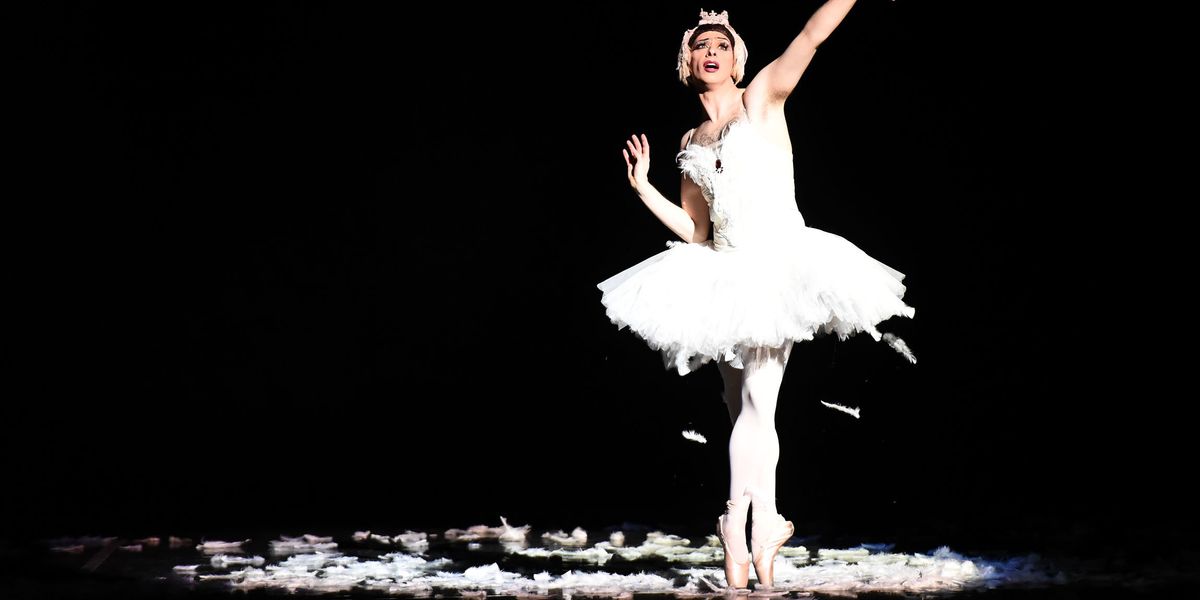Why More and More Men Are Dancing on Pointe
Like many professional dancers, New York City Ballet’s Gilbert Bolden III is totally used to sharing pics and vids of his dancing on social media. But in the fall of 2018, the corps de ballet member hesitated before posting one particular clip. “I was extremely nervous the first time I posted a video of me dancing on pointe,” he remembers. “It felt like a big step—almost like coming out. But not a single person was shady or unwelcoming!”
Once pretty much limited to women, pointe shoes are now being donned by more and more male-identifying dancers—for reasons as diverse as the dancers themselves. If you, too, are a pointe-curious guy, allow Bolden and other amazing male dancers to point(e) you in the right direction.
The History of Men on Pointe
Professional male dancers have been performing on pointe at least since the late 1940s. In ballets like Cinderella and The Dream, British choreographer Frederick Ashton frequently has men wearing pointe shoes for comedy’s sake. But Bennet Gartside, a principal character artist with The Royal Ballet, says that “proper” pointe technique for a man dancing in drag as one of Cinderella’s ugly stepsisters is worlds away from the refined pointework of Princess Aurora. “I don’t have to make it look nice or beautiful, or even be completely over my box all the time,” Gartside explains. “You’re expected to hoof around a bit aggressively.”
You’ve probably heard of Les Ballets Trockadero de Monte Carlo, the all-male drag ballet troupe that’s toured internationally since the 1970s. In contrast to Ashton’s charmingly inelegant characters, The Trocks’ parodies of famous ballets demand real-deal pointe technique. In fact, Trocks ballet master Raffaele Morra says that the large number of young men trying pointework these days means that the company can make its choreography even more authentic to the original ballets. “Now that dancers join having already trained on pointe, we can do Paquita‘s 32 fouettés with double and triple turns,” Morra says. “We only need to tweak the choreography to make it funnier.”
“Pointe shoes have always been enigmatic and alluring to me. After years of curiosity, I figured it was time to get a pair of my own and see what all the fuss is about. If you want to get a pair of pointe shoes (and have $100), who can stop you?!” —American Ballet Theatre principal James Whiteside (aka pop artist JBDubs)

Gartside as Bottom in The Dream (Bill Cooper, courtesy Royal Opera House)
What’s the Pointe?
So, why are a growing number of young men putting on pointe shoes—despite the blisters, bruised toenails, and other delights that female dancers know all too well? Josephine Lee, an expert pointe shoe fitter, has recently seen more guys getting fitted for two main reasons. “First, you definitely articulate your feet and ankles differently up on full pointe,” she says. “Improving flexibility and stability in your foot and ankle is one real benefit.” And as societal norms have (slowly) evolved, the idea of men wearing traditionally female attire of any type has become less and less controversial. “A lot of men I’ve fitted wanted to pursue pointe when they were growing up,” Lee says, “but it wasn’t clear to them that they had the choice.”
Ballet tends to attract the kind of person who jumps at a challenge and strives for constant improvement—and what’s pointework if not an exciting technical and artistic challenge? “It’s like saying to a female tennis player that she can’t use a specific racquet because it’s for men,” Morra says. “Every dancer can dance on pointe. Ballet has always been the experience of pushing the body’s limits, and now it’s time for men to do that with pointe shoes.”

Whiteside stands on pointe (courtesy Whiteside)
Bolden’s motivation for starting pointework was simple: “It’s so much fun! When I was younger, pointe was always in the back of my head as something I wanted to try, just from watching the female principals.” Now he’s discovering previously unfamiliar muscles, mastering tons of classical variations, and articulating his feet and ankles like never before. And he’s found yet another benefit: “When I’m choreographing, I’ll put on pointe shoes to try out the steps. You have to get in the shoe sometimes to understand what’s possible.”
Gartside says that going on pointe helped him empathize with his pas de deux partners in a new way. “Dancing as Bottom in The Dream for the first time really enlightened me as to what the ladies go through on a daily basis,” Gartside recalls. “I could barely survive an hour, and they do this all the time. I’m just absolutely in awe.”

Eric Underwood in Wayne McGregor’s Carbon Life (Bill Cooper, courtesy Royal Opera House)
Pointe-ing the Way Forward
The hope is that as more male-identifying dancers reach high levels of pointe proficiency, a more gender-diverse group of dancers will have opportunities to perform in pointe shoes for an audience. Bolden experienced that thrill for the first time earlier this summer, when NYCB principal Ashley Bouder choreographed a piece for the Vineyard Arts Project that saw Bolden dancing on pointe for an entire movement. “At 6’3″, I’m a big guy,” Bolden says. “This ballet had me dancing with the smallest girl in the cast. Ashley wanted to show that pointe really is for everyone.”
Morra, Lee, Gartside, and Bolden agree that as long as you have your teacher’s approval and supervision, there’s no good reason not to go on pointe as a male dancer. As Morra says, “If something is meaningful and beautiful, how can it be female or male?” Bolden takes it one step further: “Pointe is just another facet of who I am,” he says. “It’s definitely been eye-opening and a lot of hard work, but it’s really just an extension of the ballet training I’m already getting.”




